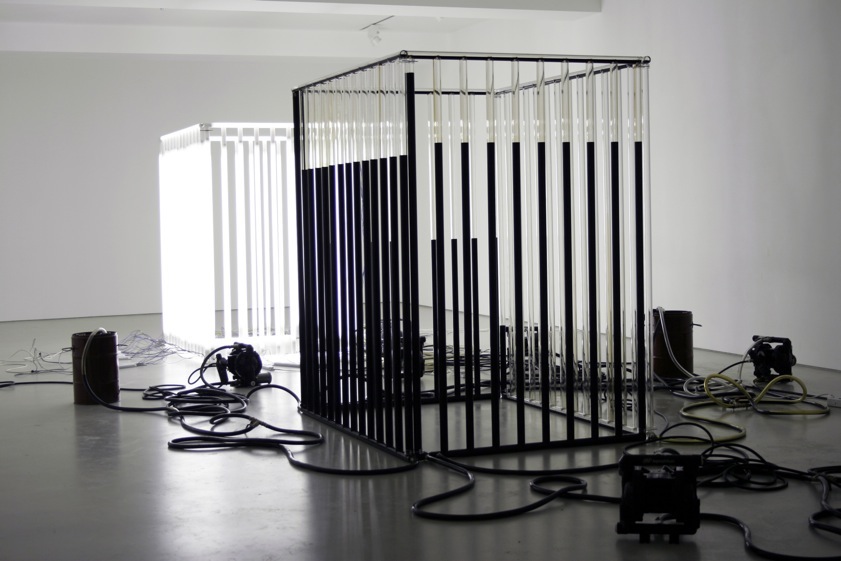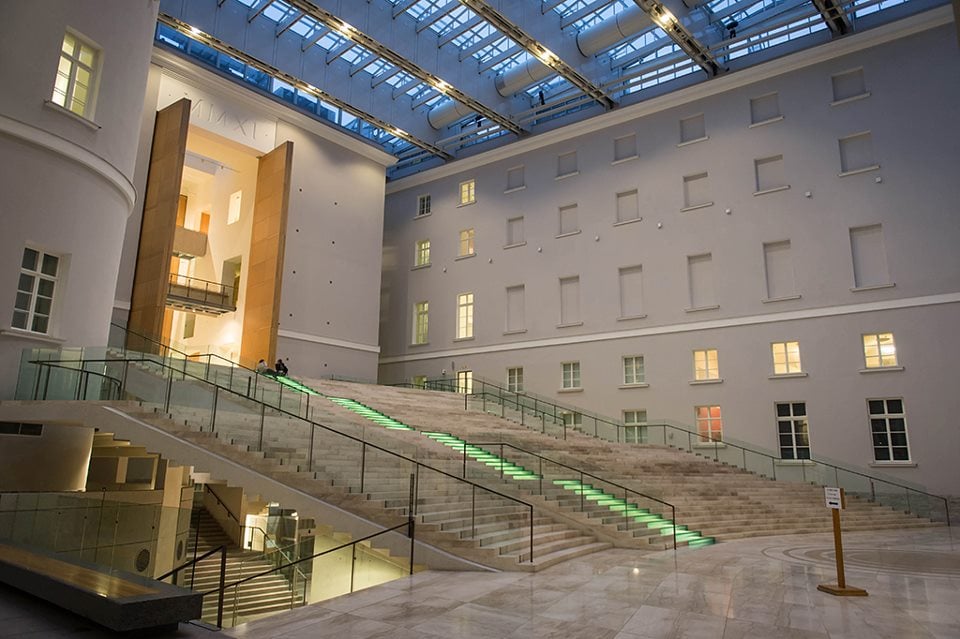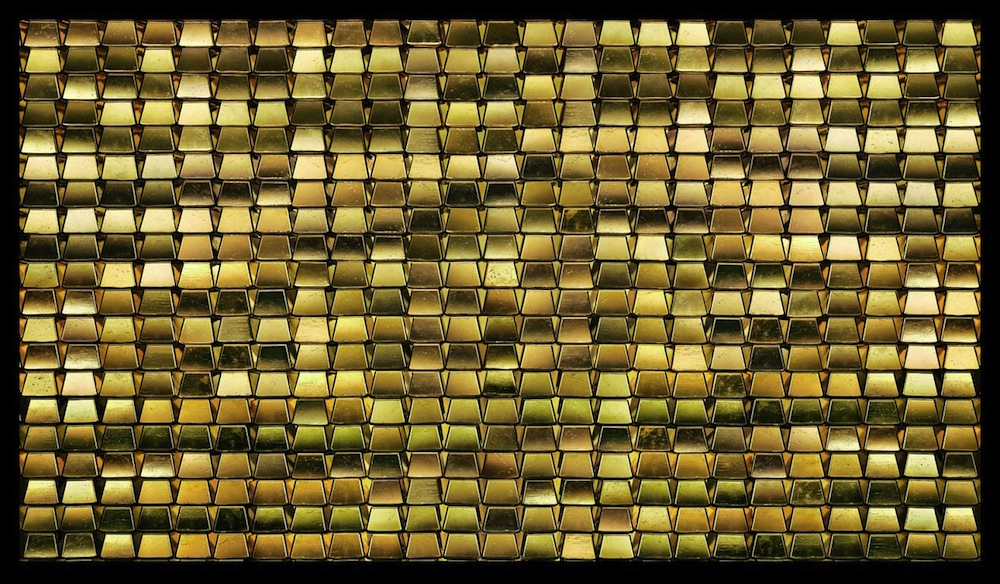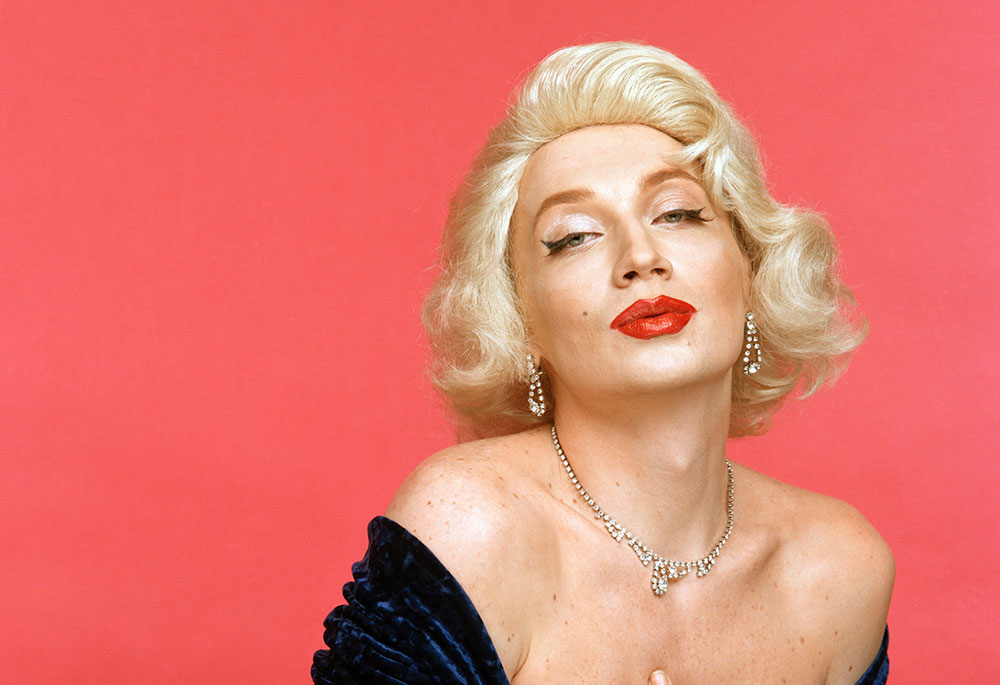Crude expression: artist Andrei Molodkin uses oil to talk back to power

Andrei Molodkin's oil-based installations and bold biro drawings take on the fossil fuel obsession of the Russian and US governments. Mark Kelner is invigorated by his deceptively simple work
All artists are creative anarchists and, like Malevich before him, Andrei Molodkin has found liberation in the colour black. Not in paint, though, but rather in the deep black of crude oil. His latest show — the aptly named Crude — transforms oil into an artistic medium, challenging viewers, and politicians, by bringing the materials of a ubiquitous but secretive global industry into the gallery and prompting questions about the link between oil and identity in Russia and America.
Molodkin came to international attention in 2009 with his work for the Russian pavilion at Venice Biennale — a sculpture filled with human blood — and with his tabloid-baiting announcement that he wanted to turn human bodies into oil. His reputation as a provocateur firmly established, the artist, who was born in the northern Russian town of Bui in 1966, now divides his time between Moscow, Paris and New York — a lifestyle which gives him ample exposure to the different strains of the political hypocrisy his work lampoons.
Film shot and edited by Jared Kudabeck for the Station Museum of Contemporary Art
Crude, his latest show, has just finished runs at Houston’s Station Museum of Contemporary Art and at the American University Museum of Art in Washington DC. The exhibition was one of the most politically charged in recent memory: as Houston is the energy capital of the world and DC the capital of war, Molodkin succeeded in opening up two important fronts in his anarchist-artist battle to reveal truth to power and to demand action. Like Pussy Riot or Ai Weiwei, Molodkin’s work is a subjective documentarian, producing overtly political, globally resonant work. His minimalist drawings, made with the hard, bold strokes of the cheapest of ballpoint pens, combine an accessible street-art feel with echoes of Soviet political posters. Just as Malevich made the role of artist available to anyone, so Molodkin eliminates the viewer’s need for contextual knowledge: we “get” his deceptively simple works because they are targeted at anyone who consumes energy, or who is consumed by it.
“Revolution, liberty and democracy for all, but at what human cost?”
Molodkin employs popular iconography and groundbreaking use of oil as a medium to represent and deconstruct the myths surrounding the founding principles of oil-rich, reactionary Russia and the energy-hungry US. Works like Liberty (Head), Liberty (Hand) and Democracy are both simple and innovative: at a time when two largely forgotten wars rage on in Iraq and Afghanistan, the provocative cylinders of these compressor-pumped, laser-cut acrylic sculptures, pulsating with Texas crude, remind us not only of the real motives and origins of these wars (oil), but also of their cost (blood). The starkness of the black gold coursing through them is a harsh alternative to the red, white and blue that normally accompanies words like “liberty” and “democracy”. Revolution, liberty and democracy for all, but at what human cost?
This is graphically spelled out in three ambitious works in ink. The literally crude Yes We Can Fuck You is a personal mediation not on Barack Obama so much as the interplay between symbolism and sloganism inherent in the office of the president. Demagoguery and false representation have long been a concern for Soviet-born artists; Molodkin goes still further by incorporating green — the traditional colour of Islam — in Obama’s likeness, playing on popular myths about the President’s religion, as well as the colour of money.
“Molodkin sets his sights on the personal implications of crude”
Likewise the ballpoint blue of drawing Gazprom captures just the right shade of burning natural gas. Lady Liberty needs two torches to handle the abundance of gas worldwide: she’s subverted into a tool of production, a hellish flame atop a state-owned refinery. Vladimir Putin, the boss-of-bosses when it comes to Russia’s oil and gas monopoly, is also captured in pen in provocative portrait Putin Fuck You. The simplicity of the medium mirrors the simplicity of his gesture (giving the finger) against the vast whiteness which seems to be swallowing him up, rendering his image — and his power — fleeting. The effect is as cold and harrowing as the Siberian winters that Molodkin knows so well, having served his compulsory military service there (delivering, of course, oil).

Empire at War
Molodkin’s experiences in Siberia influenced his mission to transform oil from a natural resource into an expressive form. He makes clear that we need to realise that this organic commodity, “like ink from a pen or a heart pumping blood”, is transient and temporary. Like Canadian artist Edward Burtynsky, who spent years photographing the extraction and oil’s refinement, distribution and place in mass culture, as well as the waste it leaves behind, Molodkin addresses the dangers of the coming “end of oil”.
“Crude oil, although considered critically, has never looked so good”
The two artists share a sense of irony when expressing the political and social implications of oil. Burtynsky refers to his hard-hitting images as “a second look at the scale of what we call progress”, but this indictment is made alarmingly gorgeous. Molodkin does the same: crude oil, although considered critically, has never looked so good. Both artists use aesthetics to make a contrarian point and prompt political change for the better, however unlikely it may be.
Nevertheless, oil remains the currency that counts, the grease that keeps structures of control running smoothly. And that goes for the art world too. In 1975 German-American artist Hans Haacke produced On Social Grease, six plaques engraved with quotations about the relationship between art and Big Oil from captains of industry. Robert Kingsley, a manager in Exxon’s Department of Public Affairs, was quoted as saying: “Exxon’s support of the arts serves the arts as a social lubricant. And if business is to continue in big cities, it needs a more lubricated environment.” The response of art historian Travis English response can’t be bettered: “Sponsorship of the arts provides the lube necessary for corporations to more easily fuck the public.” By turning it into the perfect raw material for art, Molodkin shows that oil has become our generation’s ubiquitous cultural lifeblood. “Oil,” he says, “is like a global language of our world.”
But while Burtynsky explores the life cycle of oil production and Haacke the absurdity of its influence, Molodkin sets his sights on the personal implications of crude. Tate Modern recently acquired his Liquid Modernity, an oil-cast replica of the cage used for the infamous public trial of former oligarch/oilgarch and current prisoner, Mikhail Khodorkovsky. Prison imagery is nothing new in Russia’s visual and literary tradition, but Molodkin inserts this motif into the material reality of the post-Soviet space — oil is the catalyst for gluttony, corruption and political exploitation.
“Oil is the symbol of transformation. That’s what my art tries to capture,” he has said. Molodkin believes Russia is an “oil democracy”, a “black democracy”, of opacity, grime, plunder and dirty dealings. “Maybe I also will be corrupted by oil. Everyone who works with oil begins to be corrupted by its power… me too.”
But not yet, it seems. Today’s Russia is full of politically minded artwork, yet self-censorship is clearly evident. Say what you want about your leaders, but invoke the Church, and say hello to a cell. The sham trial and sentence of Pussy Riot represents another affront to the challenges of self-expression. Molodkin’s Crude, however, speaks to and for those whose voices have been silenced. Just as the cage is the perfect symbol of government oppression, oil transforms itself into the ideal metaphor for protest — a fight and a scream for a revolution. As we approach the centennial of his Black Square, a punk rock icon for its time, Malevich might have approved.

_Liquid_Modernity,_2009,_drawing.jpg)


